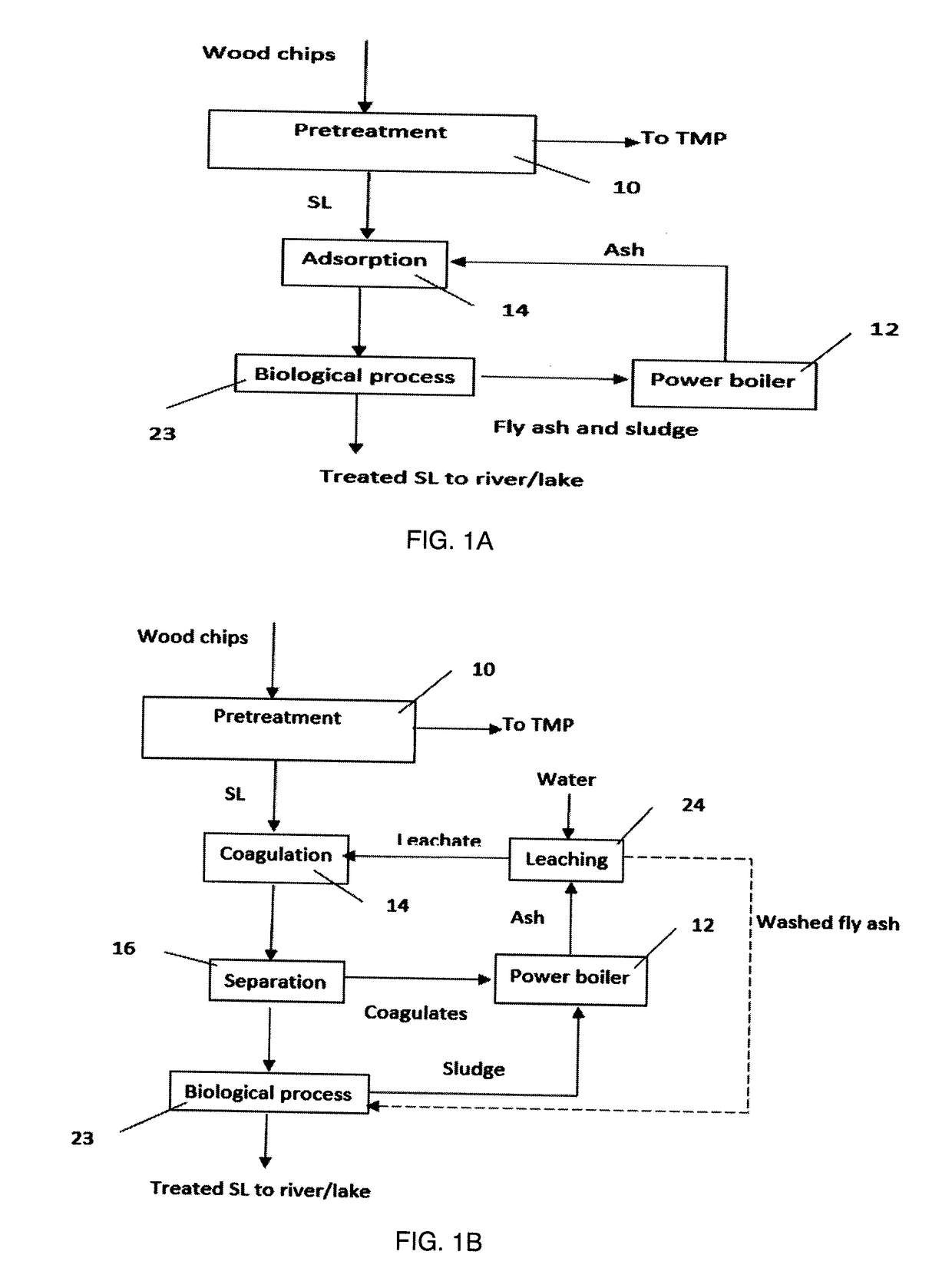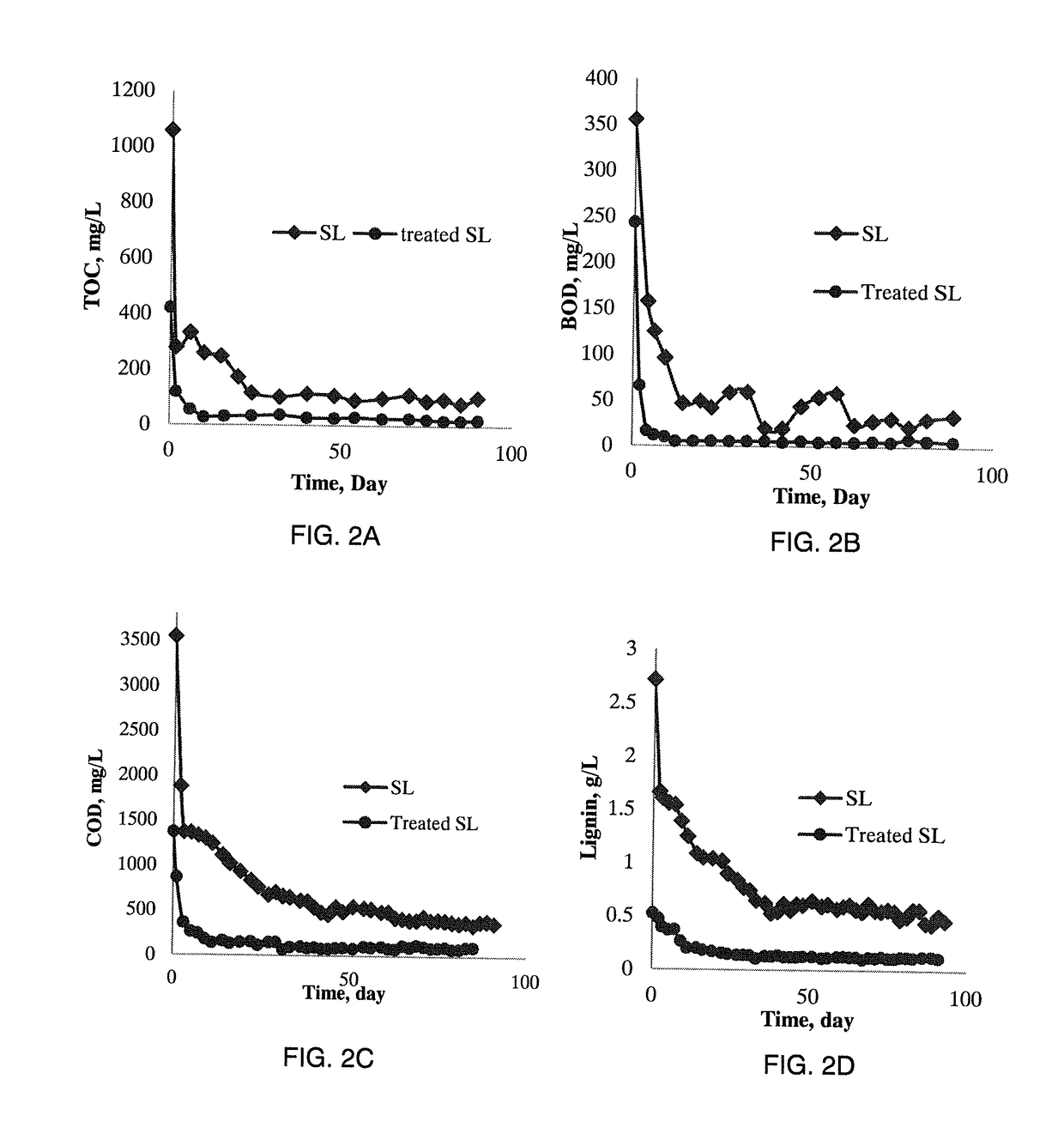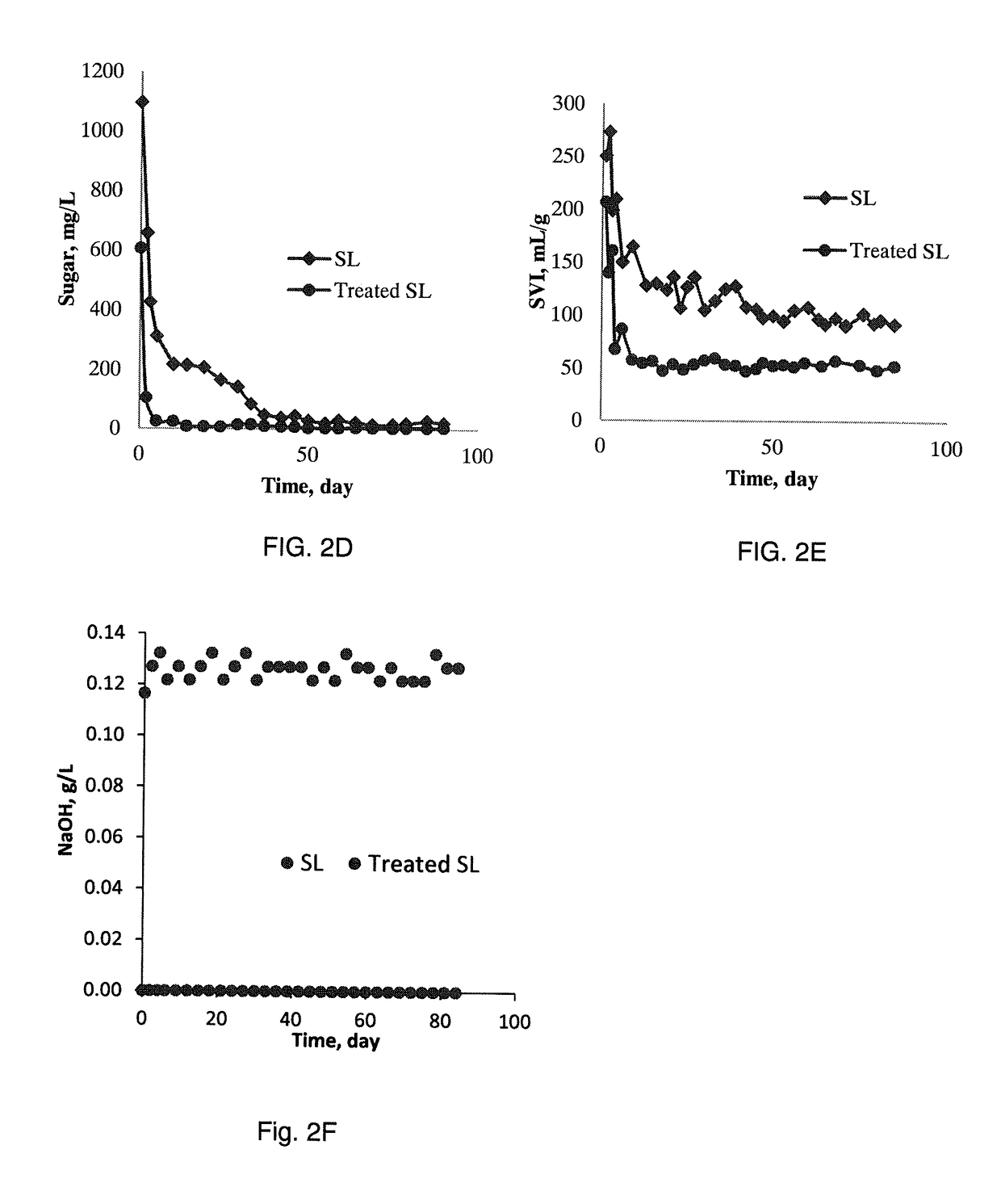Use of Fly Ash in Biological Process of Wastewater Treatment Systems
a biological process and fly ash technology, applied in the field ofpulping processes, can solve the problems of wasting dissolved lignocellulose in wastewater, affecting the economic benefits of pulp and paper industry, and affecting the settling ability and dewatering performance of biological systems, so as to improve the turbidity, biological oxygen demand, and turbidity of biological systems.
- Summary
- Abstract
- Description
- Claims
- Application Information
AI Technical Summary
Benefits of technology
Problems solved by technology
Method used
Image
Examples
experiment 1
2. Impact of Fly Ash Pretreatment on Biological System
[0063]2.1. Fly Ash Pretreatment Process of SL
[0064]To investigate the adsorption of organics of SL on fly ash under different conditions, various amounts of fly ash were added to 50 g of SL in 125 mL Erlenmeyer flasks. Then, the flasks were sealed and stood for 5, 10, 17 and 24 h at room temperature. Afterwards, the samples were filtered using Whatman filter (No. 5) and the filtrates were collected for analyses. This set of experiments was conducted to identify the removal efficiency of fly ash for organics of SL. All tests were conducted three times and the average of the three was reported.
[0065]2.2. Sequencing Batch Reactors (SBR) Experiment
[0066]In this set of experiments, SL with and without fly ash pretreatment was treated with activated sludge. The laboratory experiments comprised of two parallel SBRs. Each reactor contained 1.2 L sludge / SL suspension. The concentration of mixed liquor suspended solids (MLSS) was intentio...
experiment 2
5.2. Results of Experiment 2
[0086]5.2.1. Performance of Different Biological Processes
[0087]To evaluate the effect of fly ash on activated sludge biological treatment, three systems were evaluated in parallel. One unit was operated as a conventional activated sludge unit. The second unit contained fly ash pretreated SL for biological treatment, and the third unit contained in-situ fly ash activated sludge system. The dosage of fly ash in the second and third units were the same (0.2 wt. %). The performance of activated sludge in the three systems for removing COD, BOD, TOC, sugar and lignin are shown in FIG. 3. Steady-state values were achieved in one day for the in-situ system, whereas in took 10 days for control and fly ash pretreated SL to reach stead state. It appears that the rate of removals in the in-situ system was faster than other systems. It can also be seen that the removal efficiency of COD and TOC increased slightly in the in-situ system, but control and fly ash-pretre...
experiment 3
5.3. Results of Experiment 3
[0090]5.3.1. Leaching of Metals from Fly Ash
[0091]In this study, the biomass fly ash leachate was concentrated to produce FLC to evaluate its potential use as an alternative coagulant for SL (44). The concentration of metals leached to water via treating fly ash with water under the conditions of 70 mg / g of fly ash / water at room temperature for 2 h are listed in Table 3.
TABLE 3Metal content of a fly ash leachate (FLC) in water (70 mg / g fly ash / water)Fly ashleachateFly ashaMetalmg / Lwt. %Major metalsCa1218.7019.16K2415.803.82Na464.760.70Trace metalsAl0.070.94AsBa0.750.14BeCd0.02CoCrCu0.01Fe0.010.59Mg0.781.48Mn0.160.79MoNi0.05PbSi0.310.09Sr2.140.05Ti0.02VZn2.270.19MDL: minimum detection limit
[0092]5.3.2. COD and Lignin Removals
[0093]FIG. 4 shows the impact of a FLC dosage on the chord length of SL. It is seen that as the dosage of a FLC increased from 1897-5060 mg / kg FLC / SL, the total number of counts and the peak chord length increased. In FIG. 4 the impact...
PUM
| Property | Measurement | Unit |
|---|---|---|
| heating value | aaaaa | aaaaa |
| hydraulic retention time | aaaaa | aaaaa |
| wavelength | aaaaa | aaaaa |
Abstract
Description
Claims
Application Information
 Login to View More
Login to View More - R&D
- Intellectual Property
- Life Sciences
- Materials
- Tech Scout
- Unparalleled Data Quality
- Higher Quality Content
- 60% Fewer Hallucinations
Browse by: Latest US Patents, China's latest patents, Technical Efficacy Thesaurus, Application Domain, Technology Topic, Popular Technical Reports.
© 2025 PatSnap. All rights reserved.Legal|Privacy policy|Modern Slavery Act Transparency Statement|Sitemap|About US| Contact US: help@patsnap.com



